#járngreipr
Photo

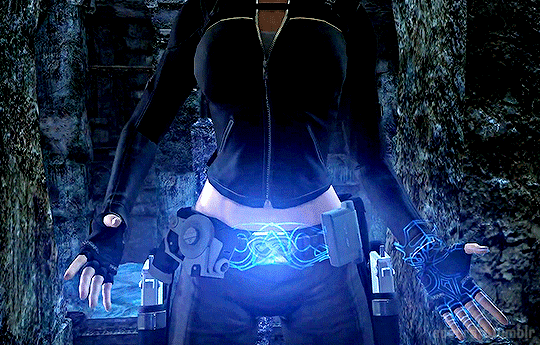

'It was said that Thor could only wield Mjolnir by wearing a special pair of iron gauntlets. The gauntlet I discovered in Niflheim could very well be the source of this myth. Most of the gauntlet itself crumbled to the touch, but the carved knot of stone and metal in its center was undamaged by age. It extended metal tendrils and conformed to the dimensions of my hand perfectly. Clearly this is the ancient source of power of the artifact and the rest of the gauntlet was added separately later.'
'The myth held that only with the additional strenght bestowed upon Thor by the enchanted belt, Megingjord, could he wield the weapon Mjolnir. Now I see that the belt - also ornately augmented by later users - is the source of power for the gauntlets. They channel the belt's power to those large special objects too large to move unless so equipped. Each of the two gauntlets I found must have contained a small amount of residual power in them that quickly drained without the belt to replenish them. I believe I have a good idea of how Thor's hammer might work when I find it.'
Lara Croft + Thor’s belt and gauntlets
#gamingedit#tombraideredit#laracroftedit#lara croft#tomb raider#tomb raider underworld#tr: underworld#thor#járngreipr#megingjörð#vg#mygifs#mikaeled#gamingnetwork#gamingladies#dailygaming#chewieblog
197 notes
·
View notes
Text

When did Thor get his Járngreipr replaced?? (I know one was destroyed)
56 notes
·
View notes
Note
Hi, I hope you're doing well. I was wondering if you could tell some things associated with Thor (crystals, animals, colors, food, etc.) I looked through your Thor tag and I didn't really find anything on that (sorry if I'm wrong)
Thanks! I hope you have a wonderful day/night :)
Hi there! I'm doing well, thank you for asking!
Now, I'm sorry to say that correspondences are a rather new phenomenon, and though they're popular in online spaces, one finds out with time that they might not really resonate, or feel truly "right". That's because followers of certain deities often experience these beings in vastly different ways. You might realize that though your friend associates a deity with the deer, that same deity seems to manifest themselves to you in the form of a serpent, instead! This is a grossly over-simplified example of how multifaceted deities can be. Symbolism, when it doesn't have any roots in history, varies wildly from one believer to another. That is why I often don't give much credit to set lists of "correspondences" found online. Especially when they pertain to crystals associated with norse deities! That's because so, so many of the more mainstream crystals you'll find in witchcraft and pagan spaces aren't native to the areas where these Gods were worshipped, and have been imported there quite late in history. For this reason, it's especially difficult to determine, "which crystal would fit the most with my perception of this nordic deity?".
But still, you'll be happy to hear that there are a few unmissable symbols of Thórr! The following symbols have all been associated with him at some point in history:
The bear! One of Thórr's more popular kennings today is Björn, or "Bear" (I often use Bear God in my prayers), which appears in the Snorri's Edda and in the rímur Lokrur.
The goat (by extension, cattle and livestock), as it was said that his chariot is pulled by two goats. One of the main theories concerning Sweden's very famous tradition of building a Yule goat (or using straw goats to decorate) is that it originally stemmed from this particular part of his myth.
Anything that's related to land fertility and the harvest! Sources often depict him as a God of the sky, bringing forth rains and the like. In Iceland, he was primarily worshipped as a fertility deity, giver of good harvests and plentiful soil.
Thursdays, as the term Thursday itself stemmed from his name.
The rowan tree! As I've mentioned before in this post, oral tradition has it Thórr had once been saved by rowan tree which he grabbed, thus saving himself from drowning. This is why the rowan is often considered his sacred tree.
The anvil, as a popular saying had it thunder was the sound of Thórr beating his, as he worked in his forge.
The belt of power Megingjörð, the iron gloves Járngreipr and the hammer Mjöllnir, which grant him part of his strength.
The oak. These particular trees were often associated with thunder deities (famously, with Zeus) because they tend to be the highest individuals in a forest, making them the most likely to be struck by lightning. What's more, 8th century bishop Willibald, in his Vita Bonifatii auctore Willibaldo, tells us of "Donar's oak" ("Thor's oak"), a sacred oak tree which was located in modern day Germany and which was important to local pre-christian worship. This tree was notoriously cut down by missionary Saint Boniface, and what its location might have been unfortunately remains a mystery.
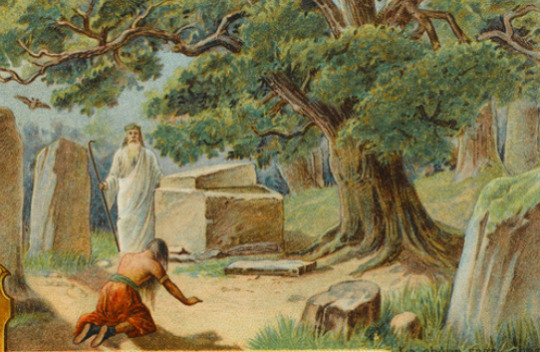
Now, if I'm to dive deeper into his symbols and associations, I'll first mention the Miðgarðsormr, the World Serpent Jörmungandr, a figure which he faces twice in the myths! They are often depicted together, locked in combat, and one of Thórr's oldest attested myths is the one in which he accidentally fishes Jörmungandr after having used a bull's head as bait. Pulling fiercely against each other, they made the sea so agitated that it seemed to be boiling.


Drinking horns can also be associated with him, as he was said to be the best drinker out of all the Æsir! In one of his major myths, he is given a horn to drink by the jötunn figure Útgarða-Loki, who, unbeknownst to Thórr, has magically made it to fill with all of the ocean's water, making it impossible for the liquid to ever run out, or even lower. Still, Thórr drank so much from it than the ocean's level dropped, which stunned Útgarða-Loki. This might have been an early tale to explain the tides!
As for my personal experiences, I tend to associate him with the color red! After all, he was said to be a redhead! And this color feels both warm and fierce, two words I would use to describe Thórr! Earthy colors, like deep greens and browns feel very much like him to me, as well. After all, he is said to be the Son of the earth, and this part of his myth has always been super prominent in my worship when it comes to him. The Futhark runes Uruz and Algiz are also present in my Thórr worship, due to their association with strength and protection respectively. However, the rune Thurisaz (or Thurs) is generally considered his main rune association, as it's often said to represent giants, and their main mythological antagonist by extension. Now this is more UPG, but as for foods, I personally associate him with red meats, hearty winter meals and alcohols, especially beer and mead!
#hail Thórr#heathenry#norse paganism#polytheism#mythology#norse mythology#norse gods#paganism#spirituality#deity work#deities#pagan#Thor deity
29 notes
·
View notes
Text
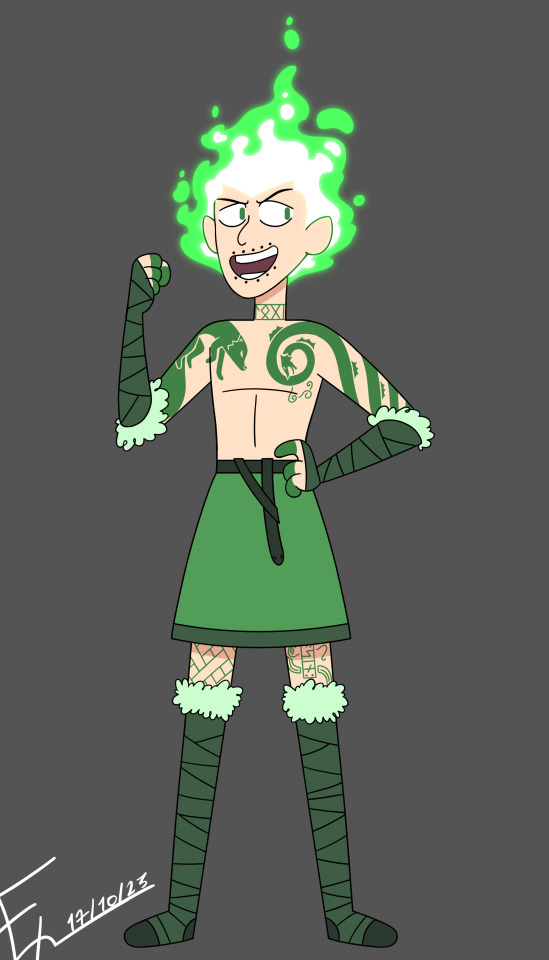



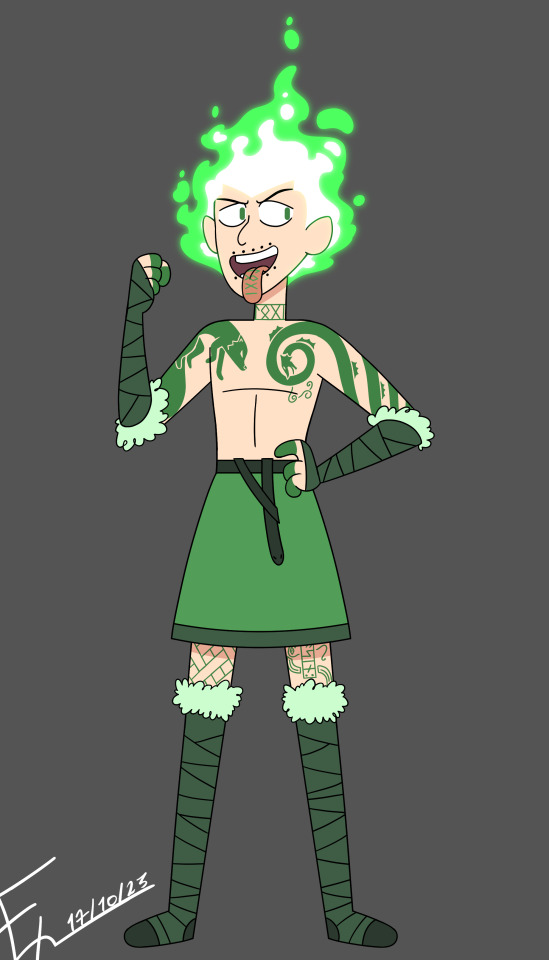
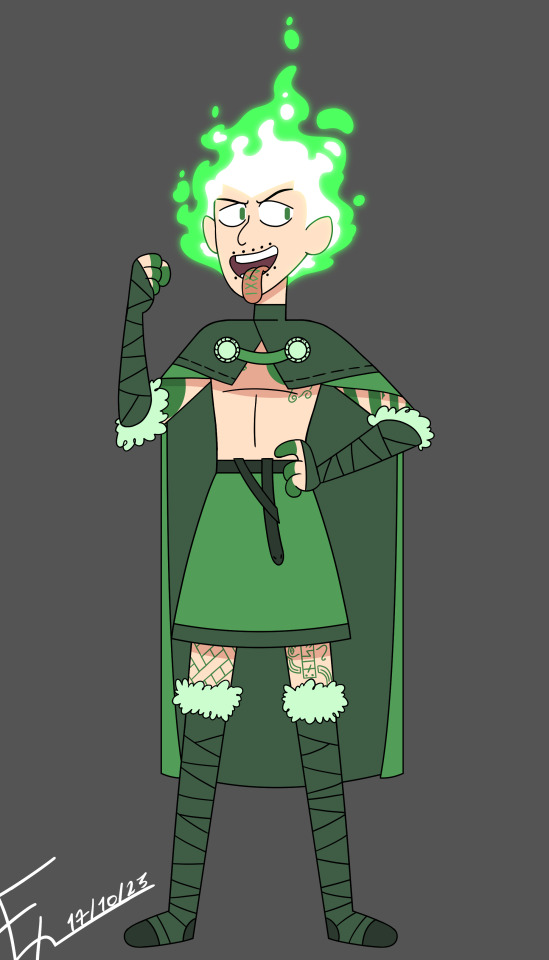
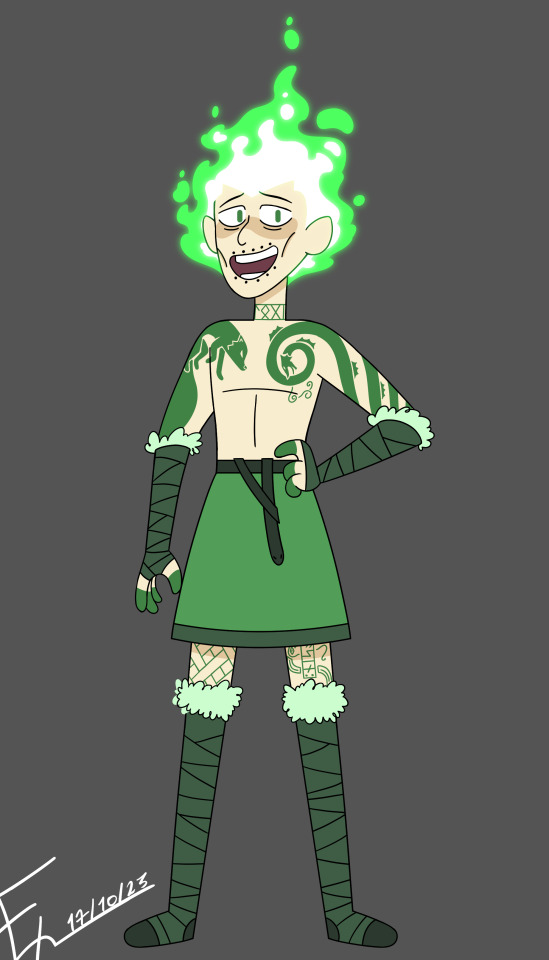

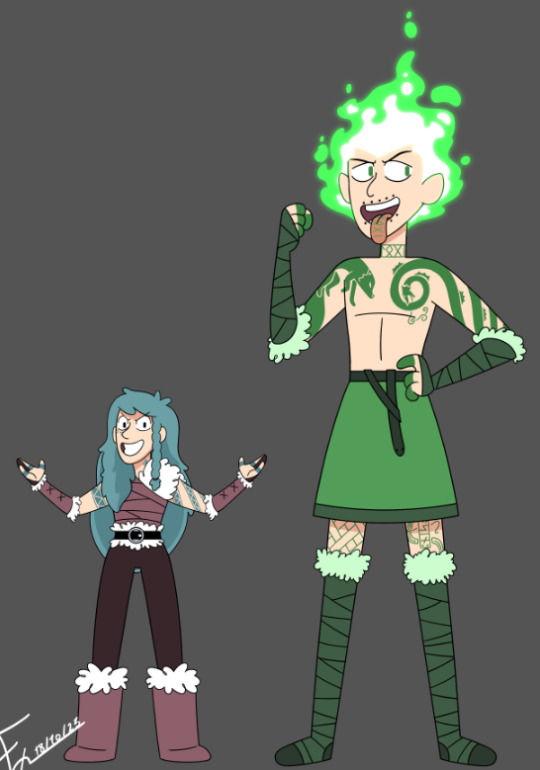
THE GOD OF MISCHIEF AND FIRE IS HERE!!! Loki is finally updated! Now he looks waaay better (and more androgenous :v) than before, now with even some tattoos!
Son of Fárbauti with Laufey, Loki was brother of Býleistr (which was also known as Thor and the giant father of wather spirits) and was "born" when his father struck his mother, causing a wildfire. From it, he took form. Loki had always been jealous of his brother, and when the dwarves Eitri and Brokkr decided to make the hammer Mjölnir for Býleistr, Loki decided to disrupt the forging but although succeeding with it and making the warhammer's handle smaller for such a gigantic hammerhead, Býleistr was fascinated by the hammer and could wield it even with such a disparity in weight.
Loki was fuming in rage and when a young god, Perkwunos, wanted the hammer for himself, Loki helped the young god achieving the god's goal, but his envy and jealousy blinded him to see though Perkwunos's intention. When the god held the hammer in his hand, he did not waste time on slaying Loki's brother in cold-blood, taking for himself the magic of weather spirits and Býleistr's title "Thor".
After that, the young god now named Thor threatened Loki into tricking Eitri and Brokkr to make for the thunder god a way to use the hammer with ease (due to its weight and small handle), and so the "járngreipr" were forged. Upon discovering about the trick, Eitri and Brokkr captured Loki and sewn his mouth shut "so he could not spread any more lies".
His other stories where he lied, tricked the gods and giants and even helped in the killing of Baldr led him into being hunted and captured by Váli Odinson, the god born with the sole purpose of capturing Loki, and bounding the trickster god into a rock with Loki's own daughter's guts, and the most venomous snake to spit its venom on the god's face for eternity. If not by Sigyn, his lover, who holds a bowl below the snake's mouth, Loki would be forever suffering and even if from time to time Sigyn has to let the venom drip on his lover everytime she empties the bowl, causing him to spasm and causing Midgard to shake, he would not have chosen any other one to spend his eternity with.
FINALLY HE IS DONE! I wanted so much to redesign him and I finally could BUT if you think he's the last redesigned OC Imma post, you're wrong >:D some Valkyries were also redesigned too and WILL be posted first on my P4TR30N so if any of you want check it out, it will be worth your money :D
OLD LOKI
#hilda#hilda netflix#hilda the show#hilda the series#hilda fanart#hilda au#au#alternate universe#oc#original character#loki#god of mischief#god of fire#lævateinn#medallion#wand#witch#hilda and the allmother#hilda and the all-mother#exjr original
29 notes
·
View notes
Text
#59: Thor, God of Thunder

[Art Credit: Raf Grassetti]
---
It's been so long since I said this, but... Welcome, Gods and Goddesses! Our long-time reader, @dionysus-liber, has requested a mythology-accurate build of Thor - God of Thunder and Storms, God of Strength and Masculinity, Protector of the Hearth, and one of the key members of the Aesir pantheon. Now, the reason I chose the appearance from God of War: Ragnarök is because I believe this to be the most accurate portrayal we have in any media at the moment: brusque, with bushy red hair and beard, and built like a powerlifter off-season. I could've make an entire separate post describing the intricacies and little details of Thor's character, but for now, let's get down to business to defeat the Jötnar!
Next Time: Divine storm rages. It continues moving East. Watch out for horses.
Now, what was that thing we're usually do here? Ah, yes, build goals!
Divine Equipment: While Thor boasts unrivaled physical strength and stamina on his own, he is also the master of three important items that further increase his might; those being Megingjörð, the Power Belt that doubles his strength, Járngreipr, the Iron Grip Gloves granting him resistance to all the power he generates, and of course the famous hammer - Mjölnir, the Grinder.
The Force of Nature: Thor is the embodiment of pure strength and power. He brings down the full might of the Aesir gods to all enemies of Asgard. The thunder you hear in the skies is the result of his mighty hammer swinging against Jötnar skulls. While he doesn't manipulate lightning to the same extent as, for example, Zeus or Ao Kuang, the storm always joins him on the battlefield.
War Priest: People know Thor mostly due to his feats of strength and achievements on the battlefield (and probably because of... eugh... Chris Hemsworth's portrayal), but what you might not know is that Thor is also viewed as the ultimate protector. His hammer is used to bless and certify marriage ceremonies, he has the ability to heal wounds of warriors, and even resurrect his faithful chariot-pulling goats.
---
There are two options when it comes to making Thor in D&D. One is to go with Goliath if you want to emphasize his endurance and strength; that would be a very good, solid base, but I've used this one in my Kratos build, so we're gonna use the other option (and this blog's regular go-to), the Aasimar from Mordenkainen's Monsters of the Multiverse. We start with a +2 and a +1 to two abilities of our choice (Strength and Constitution respectively), resistance to necrotic and radiant damage, the Healing Hands ability that lets us heal a creature for [our proficiency bonus number of d4s] Hit Points once per long rest, and the Light cantrip (to apply on the hammer :D)

Thor gets involved not only in the affairs of the divine, he is also very prominent in the lives of mortals. His protection and blessings are not only sought by warriors going a-viking (yes, viking is a verb) but also by the common folk and Scandinavian villagers. Because of that, we shall make him a Folk Hero. We gain proficiency in Animal Handling and Survival, which will be useful to take care of our goats in the desolate wastelands of Jötunnheimr, as well as proficiency with one set of artisan's tools (perhaps brewer's supplies to have a refreshing gallon of mead on the road) and land vehicles (such as goat-drawn chariot). Finally, thanks to the Rustic Hospitality feat, we may find our place among the mortals and common folk with ease and have a better chance of finding food, shelter, and potential aid in some tasks.
ABILITY SCORES
This one is a no-brainer, for Thor we must lead with Strength. Follow that up with Constitution; all that bulk has to contribute to something. Dexterity will be next, Thor does not move around the battlefield but an occasional hammer throw requires a good eye.
Wisdom will actually be next, but mostly because we need it for multiclass later. Charisma will be on the lower end; although Thor has good intimidation game, his messy appearance and brusque manners are far from some of the more charismatic characters. Finally, we're dumping Intelligence - the world of arts and science is not one we frequent.
CLASS
Level 1 - Barbarian: We need a solid base of health and damage to start with. Barbarians get a d12 as their Hit Dice, [12 + our Constitution modifier] initial Hit Points, proficiency with light armour, medium armour, shields, simple and martial weapons. We will give Thor a hide armour and, of course, a warhammer. Our saving throws are Strength and Constitution and we get to pick two class skills from the list (Athletics and Intimidation).
As a Barbarian, we of course start with Rage. By unleashing the divine fury, for 1 minute we gain the following benefits if we're not wearing heavy armour:
Advantage on Strength checks and Strength saving throws
A +2 bonus to damage rolls for attacks using Strength (increases as we level up)
Resistance to bludgeoning, piercing, and slashing damage
Rage lasts for 1 minute but it can end earlier if we decide to end it, we are knocked unconscious, or we fail to deal or receive damage during our turn. Initially, we can Rage twice per long rest.

We also get Unarmoured Defense; if we're not wearing any armour, our AC becomes [10 + our Dexterity modifier + our Constitution modifier].
Level 2 - Barbarian: We develop a Danger Sense, giving us the advantage on Dexterity saving throws against effects that we can see (such as traps and AoE spells). To apply that status, we cannot be blinded, deafened or incapacitated. While attacking, we can also declare to make a Reckless Attack; we gain an advantage on the first Strength-based attack of our turn, but for the entire turn the enemies have an advantage on attacks made against us.
Level 3 - Barbarian: At this level, we can now use our Rage three times per rest. At this level, we also get to pick our subclass, our Primal Path; since Thor is the ultimate warrior of the gods, we're gonna use Path of the Zealot. We are able to channel Divine Fury into our weapon strikes. While raging, the first creature we strike on our turn takes extra [1d6 + our Barbarian level] radiant or necrotic damage (we choose the type when we get this feature and cannot change it).
As the Warrior of the Gods, we are meant to live until Ragnarok. Revival spells (Revivify, Raise Dead, etc.) do not require any material components when used on us.
Level 4 - Barbarian: Time for the first Ability Score Improvement. We're going to grab the Thrown Arms Master feat from Critical Role's Tal'Dorei Campaign Setting Reborn (it's now on D&D Beyond, the setting is semi-canon, I'm using it!): our Strength or Dexterity increases by 1, and weapons without Thrown property (such as our current warhammer) gain that property; I would also ask the DM to allow the next part of that feat: when missing a throw, a weapon comes back to our hand; normally, it works only with light weapons, but considering our divine strength, I personally would allow it in this case.
Level 5 - Barbarian: With Extra Attack, we can now strike twice during a single Attack action. We also gain 10 feet of extra movement when not wearing heavy armour, thanks to Fast Movement.

Level 6 - Barbarian: At this level, we can literally change our own fate by being ANGRY. With Fanatical Focus, we can re-roll a failed saving throw when raging (once per rage), but we have to use the new roll. We can also now Rage four times per rest.
Level 7 - Barbarian: It's time to let go of all we've learned in Asgard about being a civilised fighter and give in to our Feral Instinct. We have an advantage on initiative rolls. Additionally if we're surprised before a combat (but not incapacitated), we can shake off the surprise and act before anyone else but only if the first thing we do is Rage.
Level 8 - Barbarian: Time for another ASI. This time, we shall put one point each into Constitution and Wisdom in order to prepare to tap into our divine portfolio with...
Level 9 - Cleric: Time to harness some divine magic! Multiclassing into Cleric doesn't provide us with any new proficiencies, but does unlock Spellcasting. Wisdom is our casting ability and we know cantrips, regular spells, and rituals. Clerics have access to their entire spell list and can prepare [Wisdom modifier + Cleric level] spells every day. We start with three cantrips (Mending, Thaumaturgy, and Word of Radiance) and two 1st-level spells (Ceremony and Cure Wounds).
Clerics also get to pick their subclass, their Divine Domain at first level. Here, it's obvious to go with the Tempest Domain to gain some power over the storms. We add two extra spells to our list (Fog Cloud and Thunderwave) and gain Wrath of the Storm: if we get hit by a creature standing within 5 feet of us, we can use our reaction to impose a Dexterity saving throw onto it; on a failed save, it takes 2d8 lightning or thunder damage (our choice) or half as much if it succeeds. We can do that a number of times equal to our Wisdom modifier per long rest.
Level 10 - Cleric: We continue our divine development with Channel Divinity. Using this feature, once per short or long rest, we can tap into the power of Asgard and utilise one of two (one deafult + one granted from our subclass) following effects:
Turn Undead: As an action, we can impose a Wisdom saving throw onto all undead creatures within 30 feet of us. On a failed save, they are Turned (cannot take reactions, must spend their turn running away from us, cannot get closer than 30 feet of us) for 1 minute or until they take damage;
Destructive Wrath: When we deal lightning or thunder damage, we can use this Channel Divinity option to deal maximum damage instead of rolling

We also get one more spell for our small but significant arsenal; let's pick Bless, so that our party can receive the grace of the mighty Thor!
Level 11 - Barbarian: For this level, we gain the Brutal Critical feature. Whenever we score a critical hit with our melee weapon, we can add one additional die for determining weapon damage.
Level 12 - Barbarian: This time, we get a subclass feature. Our Zealous Presence is truly inspiring on the battlefield. As a bonus action, once per long rest, we can unleash a thunderous roar. Up to 10 creatures within 60 feet of us that can hear us gain advantage on attack rolls and saving throws until the end of our next turn.
Level 13 - Barbarian: At this level, we get Relentless Rage. If we drop to 0 Hit Points while raging, we can make a DC 10 Constitution saving throw. On a success, we get 1 Hit Point back. Each time we use this feature, the DC increases by +5 and resets back to 10 after a short or long rest.
Level 14 - Barbarian: We finally get another ASI. We can finally cap off our Strength to that godly 20.
Level 15 - Barbarian: Our Brutal Critical feat improves here. When scoring a critical hit, we can now add two dice to our damage rolls.
Level 16 - Barbarian: At this level, we get to channel our inner Dylan Thomas and Rage Beyond Death (...eh, they can't all be winners). While raging, we do not go unconscious if we drop to 0 Hit Points. We still have to make Death Saving Throws, but all the effects only take hold after our Rage ends... at which point, we can call Relentless Rage and possibly shrug off the damage.
Level 17 - Barbarian: To add on top of the previous feature that makes us immortal as long as we Rage, we gain Persistent Rage. The only way our Rage ends is if we choose to end it or become unconscious (which, as previously established, cannot happen from battle damage).
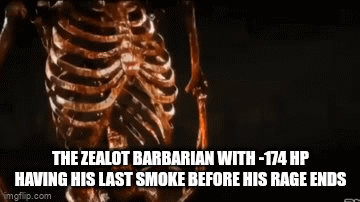
Level 18 - Barbarian: This is our final ASI of the build. While there is a lot of stuff we didn't develop (and two odd numbers, much to my distaste), we have to balance it out with more Constitution so that we can at least soak up some damage that will definitely hit us.
Level 19 - Barbarian: Our Brutal Critical ability improves again. This time, it's reeeeally going to hurt whatever creature we score the critical hit on, as we can add a total of three extra damage dice to our melee damage roll.
Level 20 - Barbarian: Our capstone is Barbarian 18, which gives us the Indomitable Might ability. If we make Strength checks and our roll is lower than our Strength score (i.e. 20), we can replace the outcome with our Strength score.
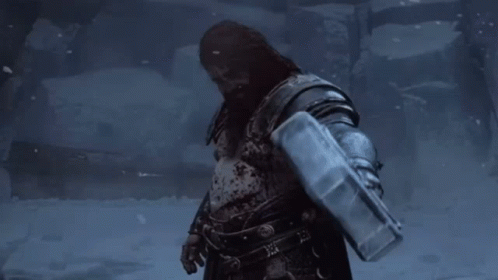
---
And that is Thor, as close to his real-life Norse myth portrayal as I could make him. Before I give you a short summary of him, however, I also need to point out that in D&D there are three items (from DMG Guide) that directly represent Thor's Symbols of Power; those being the Hammer of Thunderbolts (Legendary Maul), Gauntlets of Ogre Power (Uncommon), and Belt of Giant Strength (various rarities and types). If you wish to implement collecting those as your character's personal quest/backstory element, feel free to discuss it with your DM. Now, back to the build, what did we manage to cook?
To start off, we're a typical tank. With Strength and Constitution being our highest abilities, adding a +4 damage to damage while raging plus several opportunities to summon lightning onto our enemies. With the Cure Wounds spell, we can stay on the battlefield a little longer, and the combination of Relentless Rage and Rage Beyond Death gives us a chance to fight even after suffering serious wounds. Our role in the party is simple: deal damage and focus the enemy attention on ourselves.
Our Unarmoured AC is 15, we have a +1 to our initiative, and the average of 197 Hit Points.
Unfortunately, for decent health pool and damage dealing we had to sacrifice pretty much everything else. Apart from Strength and Constitution, our abilities are not great and we don't have a lot of skills to contribute to besides Athletics.
---
I'm back, darlings. Hope this holiday season goes well for you. I do not make any promises to not sound like a dishonest fool, but I at least hope I can give you something to enjoy. Looking forward to reconnect with all of you wonderful lot.
-Nerdy out!
#dnd#dungeons and dragons#character building#d&d 5e#dnd 5e#dnd build#dnd5e#dnd character#d&d#thor#thor odinson#aesir#norse gods#norse pantheon#norse mythology#norse paganism#donar#barbarian#path of the zealot#tempest cleric
15 notes
·
View notes
Note
Quirk Name: Iron Grip/Járngripper? Still not even sure on the name but I've been inspired for a long time to make an OC quirk based specifically on Thor's mythological gauntlets Járngreipr. They supposedly allow him to actually wield the impossible weight of Mjolnir, or in some versions allow him to withstand the destructive force of the hammer when Thor throws it. Now I have a basic idea for the quirk and it's probably a mutation quirk that give the user Neodymium hands. But idk how to apply it
Iron grips/Jarngreipr contd. Considering what I think I'm going for it would probably be a mution quirk or even emitter(Could possibly be the power to turn things into neodymium via touch with the hand) but I definitely like the idea of being able to push and pull with magnetism but only certain objects/metal/himself. Hero name possibly even Thundercrash. Again if this is an incorrect message my apologies, not really sure exactly if I'm doing the right. Anyways, thank you for your time!
Not sure if it's the best idea to name a Quirk after something that most people can barely pronounce, but that’s just me.
I think there is something in this ramble that could be turned into a Quirk. Of all of these ideas, I don't entirely understand the point of turning it into a specific metal or turning other objects into that specific metal. Unless there's something specific about the metal you want to be a part of the Quirk, like having the properties of that metal affect how the Quirk works, most Quirks only seem to work with generic metal. There is a way you could include both the magnetism idea and the metal hands idea. You could make it a Transformation type Quirk that turns the user's hands into metal. Then you could say that the metal hands have an attractive pull to them, either working like a generic magnet or working through the user making contact with something, letting them apply that magnetic force to them to pull it towards them. It works in the metal gloves, works with the name you gave it, and can work as a reference to the comic version of Thor.
8 notes
·
View notes
Link
All Thor Movies Ranked from Worst to Best
0 notes
Text
Thor is born to Óðinn and Jörð, primordial goddess of the earth. He is taken by Óðinn to Ásgarðr, where he is raised as the true heir to the throne. He knows his biological mother is not Frigga, but he loves her as such all the same.
Thor and Loki are taken on a tour of the vault and told the story of the Casket. Mjölnir is not there, as it is personally forged for Thor as a tooth-gift.
When he comes of age, Thor is given Mjölnir, Megingjörð, and Járngreipr by the dwarves at the behest of Óðinn. He is also given Tanngrisnir and Tanngnjóstr, and the chariot they will one day pull. Frigga presents him with the hall of Bilskirnir on the plain of Thrúðheimr and the surrounding fields of Thrúðvangr.
Thor and Sif embark on a temporary romantic relationship, resulting in a daughter: Thrúðr.
Thor and Loki travel to Miðgarðr, where they stay on a farm for the night. Thor kills his goats to eat, as they will revive in the morning as though they were never killed, but the son of the farmer splits one of the bones and sucks the marrow from it. When the goat is revived, it is lame in one leg. Thor becomes so enraged the family begs for atonement and offers all their possessions as recompense, begging for mercy. He realises how terrified he has made them and calms somewhat, agreeing to a settlement of the family’s two children, Thjálfi and Röskva, to be his servants for all time.
Gullveig comes to Ásgarðr and begins practicing magic the Æsir deem dangerous and ungodly. They attempt to kill her three times, through stabbing her with spears and burning her corpse, and each time she resuscitated. She returned to Vanaheimr and the Vanir, enraged at her treatment, swore revenge on the Æsir.
The war between the Æsir and the Vanir begins. It is caused by Gullveig’s treatment and the Æsir monopoly on human tribute and support as the chiefly recognised gods. The Vanir come to Ásgarðr for a truce, but there is difficulty reaching it. Óðinn begins the war by throwing Gungnir at the treaty party.
During the war, Thor sleeps with Járnsaxa, one of the Jötunn, resulting in a son: Magni. Thor also gains another child around this time, a boy named Móði.
The war continues for centuries with casualties on both sides. Eventually, the gods realise they are too evenly matched and come together on neutral ground. They all spit into a vat to solidify their union as one pantheon over two, and from that vat Kvasir is born.
The wall of Ásgarðr that was destroyed by the Vanir is rebuilt by a Jötunn builder. He attempts to bargain for the sun and the moon and Freyja as a wife as his price, but the Æsir disrupt his building to avoid fulfilling the deal. Loki disappears for 18 months at this point, living as a mare to bear Sleipnir (the byproduct of his and Svaðilfari’s sexual encounter, as Loki was charged by Óðinn to disrupt the builder’s work, with it being him who convinced the gods to let the builder use Svaðilfari in his work, or he would lose his head), then returns to Ásgarðr to give Sleipnir to Óðinn.
One morning after a feast, Thor awakes to find Mjölnir missing. He cannot remember where he last saw it and it does not answer his call back to his hand. Only Loki calms his fury enough to put forward that he will look for the hammer. The two borrow Freyja’s falcon feather cloak and Loki flies to Jötunheimr, where he discovers Thrymr, a Jötunn lord, boasting about owning the greatest treasure in all the worlds. When Loki asks, Thrymr tells him he has Mjölnir hidden eight leagues beneath the earth and that without it, Thor will no longer be a protector of Miðgarðr and slayer of the Frost Giants. When Thrymr reveals he will only retrieve it from its hiding place if he is given Freyja as a wife, Loki returns to Ásgarðr to notify Thor. Although the two plan to give Freyja to Thrymr, Freyja refuses, causing an earthquake in her anger, and all the gods are called to decide what should be done.
With the matter of Mjölnir’s return highly prioritised, Heimdall suggests that Thor himself pose as Freyja and thereby bring Mjölnir back to Ásgarðr himself rather than rely on the word of giants. Thor refuses to be made a woman, and instead disguises himself in a veil and dress with a perception filter cast to prevent the giants noticing his true identity. Loki is made to tag along as his bridesmaid and the two reach Thrymr’s palace after eight days. A feast is held to celebrate the union, where Thor drinks three barrels of mead and devours two oxen, which Loki is forced to explain away as “Freyja” being so excited for the marriage she had not eaten in those eight days. Thrymr lifts Thor’s veil, intending to kiss “Freyja”, and is terrified by his burning gaze; Loki explains that “Freyja” has not slept for eight nights, eagerness consuming her. The giants bring “Freyja” Mjölnir and place it in her lap to prove their word. Thor seizes it, tears off his veil, and kills every giant at the wedding.
Over a period of decades, Loki begins to court, woo, and engage in a relationship with Angrboða, Hagia of Járnvidr. Three children are born to them: Fenrir the wolf, Jörmungandr the Worldserpent, and Hela, a girl half-dead and half-alive. When the Æsir learn of them and the prophecy that they will bring Ragnarök, Ásgarðr storms Járnvidr, and the children brought to Óðinn. Jörmungandr is thrown into the seas of Miðgarðr, Hela into Helheim to become Queen of the dishonourable dead, and Fenrir kept on Ásgarðr with the intentions of swaying him to the Æsir side.
After centuries of attempts to control the Fenris Wolf, the Æsir resolve to bind and imprison him, fearful of how large he was growing. Their first two attempts did not work, with Fenrir easily breaking the chains, but the gods commissioned the dwarves to make an unbreakable bind; Gleipnir, the ribbon. Fenrir was imprisoned on the isle of Lyngvi, deep beneath Miðgarðr, at the cost of the war god Týr’s right hand.
Thor, Loki, and his servants Thjálfi and Röskva travel east, and journey through a forest in Jötunheimr. They find an immense building and stay the night in a side hall, suffering through incredible earthquakes that cause all but Thor to become fearful. The next morning, they discover the building is in fact a glove belonging to a giant, Skrýmir, who is sleeping nearby and it is his snoring that causes the earthquakes. Skrýmir agrees to travel with them and journeys through the forest with him. That night, Skrýmir falls asleep with all the party’s provisions in his bag. It falls to Thor to open the bag, but he cannot undo the giant’s knots. In a fit of rage, he takes Mjölnir and smites Skrýmir in the head. Skrýmir wakes up, having taken no damage, and asks if a leaf has fallen on his head.
Later, Skrýmir’s snoring disturbs Thor again, and he attempts to kill Skrýmir again. The blow does nothing, and Skrýmir asks if an acorn had fallen on him. Before dawn, Thor tries again to kill Skrýmir, having lost all patience, and deals him a mighty blow: Skrýmir wakes up and asks if some dirt has fallen from a bird’s nest onto him.
Departing from Skrýmir, the party finds Castle Útgarð and, discovering they cannot open the gate but instead slip through the large bars, enter. Inside they find feasting giants and their leader, Útgarða-Loki. The giants ridicule the party for their small stature and inform them that no one can stay in the castle unless they perform an impressive feat. Loki nominates himself for an eating contest against Logi and is required to eat a trough of meat, but loses as Logi eats not only the meat, but the bones and the trough too. Thjálfi nominates himself in a foot race and races against Hugi, but loses the three races he takes part in by an arrow-shot.
Thor is challenged to drain a drinking horn of its contents. Although he takes three mighty gulps, the horn is not emptied. Útgarða-Loki claims that he has heard talk of Thor’s immense strength, and declares that if he may lift his cat from the floor of the hall so none of the paws touch the ground, he will pardon his previous failure. Thor attempts to lift the cat, but each time he does, it arches so that it’s feet remain on the ground. Eventually, Thor manages to lift it and force one paw off the ground, but Útgarða-Loki declares it a failure. Angered, Thor demands a wrestling match, touting that he will prove his strength in a conventional manner. Útgarða-Loki agrees and nominates Elli, an old woman, as his champion. Although Thor fights mightily, Elli eventually bests him and forces him to one knee. Útgarða-Loki permits them to spend the night.
The next morning, it is revealed that Útgarða-Loki was Skrýmir, and had Thor’s blows landed, they would have killed him. Instead, they created three square valleys in Jötunheim, with Útgarða-Loki deflecting the blows to the land instead of himself. It is also revealed that the contests were an illusion: Loki ate against Wildfire, who burned the food and trough to ash, Thjálfi raced against Thought itself, and Thor fought against Old Age. The horn he had attempted to drain was connected to the sea and Thor’s mighty draughts had caused the seas to ebb, resulting in the creation of the tides. The cat had been the Worldserpent, and when Thor had attempted to lift it, he had actually lifted the serpent to the skies. Enraged at the deception and the mockery Útgarða-Loki had made of him, Thor swung Mjolnir in an attempt to kill him, but both Útgarða-Loki and the palace vanished, leaving only a vast plane in its wake.
Ægir, God of the Seas, is nominated as the host for the winter feasts of the Æsir and Vanir combined, and agrees to his task as long as he is provided with a cauldron large enough for him to heat the mead for all guests at once. Týr, God of War, provides an answer in his father, Hymir, who he recalls having such a kettle in his possession. He and Thor journey to Hymir’s keep in Jötunheimr and stay the night, with Thor eating two of Hymir’s oxen and declaring he would like to go fishing the next evening. Hymir challenges him to break his chalice, unbeknownst to Thor enchanted so that it would only shatter when struck off Hymir himself, then taunts him when Thor cannot break it. He tells Thor the chalice’s secret, to which Thor then smashes the chalice over his head and bets Hymir that he can catch a greater amount of fish than he, with the prize being the kettle.
Thor and Hymir sail out into the sea, with Thor using the head of Hymir’s prized ox as his bait. The two are reasonably successful, until Thor demands they sail further out to catch larger prey. Hymir quails, warning Thor that if they sail out much further, they will encounter the Worldserpent. Thor ignores his pleas and sails out into deeper waters. He hooks the Worldserpent and after much straining and fighting, including breaking his feet through the bottom of Hymir’s boat to brace himself against the seafloor, pulls Jörmungandr to the surface. Fearing Ragnarök, Hymir dives and cuts Thor’s line just as Thor throws Mjolnir at the serpent. A furious Thor punches Hymir in the face, knocking him out of his boat and into the water, declares himself the winner of their contest and returns to Ægir with Týr and the kettle.
Thor, returning from the wedding, encounters a river too deep to wade across and a ferryman at an inlet. He attempts to persuade the ferryman to take him over the river, but the ferryman is rude and insulting to him in return, mocking Thor’s attire and his prowess. Thor briefly holds his tongue but soon returns the insults, unknowing the ferryman is Óðinn in disguise. The two war verbally, but the ferryman curses Thor and his vanity and sails away, leaving him to walk.
Several years later, at one of Ægir’s feasts, Loki had not been invited. He killed the servant at the door in order to be let in, and proceeded to insult every god and goddess at the feast. Thor returned from a journey to Jötunheim and threatened to beat him to death, at which point Loki left the feast.
THOR
Thor’s younger brother, Baldr, was gifted with protection charms from a young age where nothing but mistletoe could harm him. The Æsir regularly took part in games where they would throw weapons at Baldr, delighting as they all harmlessly bounced away from him. Baldr’s blind brother, Höðr, was unable to take part in these games as none of the Ásgarðians thought to properly position him before Baldr, but an apparition of Loki appeared, invisible to the others, and told him he would help. Loki gave Höðr an arrow of mistletoe to throw and placed him before Baldr. Unprotected from the plant, Baldr died of his wound and Höðr was put to death for his “crime”. At Baldr’s funeral, Baldr’s wife Nanna threw herself onto his funeral boat, unable to live without him.
AVENGERS ASSEMBLE
A dwarf by the name of Alvíss comes to Thor, claiming that his daughter had been promised to him in marriage by the gods and that it was his intention to collect her that day. Thor refuses, citing that he was not present when the gods decided this, and as her father he has a right to inspect his daughter’s intended husband. A pact is made: if Alvíss can answer every question Thor puts to him, Thor will agree to the marriage. If not, Alvíss must leave and the marriage will never occur. Alviss answers every question Thor puts to him through the day and night, but does not keep a note of the time. The sun shines through the windows of Thor’s hall and touches the dwarf, turning him to stone as Thor had intended and preventing the entire wedding.
THOR: THE DARK WORLD
Thor rejoins the Avengers, having returned from London with Jane, and learns of the fall of SHIELD and the hunt for HYDRA.
AVENGERS: AGE OF ULTRON
Thor and Jane part amicably, their relationship having dissolved over time. He begins searching for the Infinity Stones, worrying over their sudden relevance in the worlds.
Miðgarðr begins to clamour for culpability after the incident in Sokovia. Many rise up for the Sokovian Accords and Registration Act, which would force all heroes and people presenting themselves with mutations, powers, and abilities to register every iota of their identity, from names and addresses to abilities and weaknesses, with the government. The penalty for not doing so, imprisonment in a liminal dimensional space known as the Negative Zone, is not revealed.
CAPTAIN AMERICA: CIVIL WAR
With the civil war over and Thor’s faith in Tony shattered, he parts company with the New Avengers and resumes his search for the Infinity Stones. He travels across the cosmos, seeking stories and myths of the stones in the hopes of finding some measure of truth.
AVENGERS: INFINITY WAR & AVENGERS: ENDGAME
Following Thanos’ death, Thor does fall into a depression, but does not become ‘Bro Thor’. He tortures himself by remaining locked away on Ásgarðr, the empty halls serving as his penance and reminder of his failure to end Thanos before The Snap. Only the recall for the purposes of the Time Heist brings him out of his isolation, where he ultimately participates in the final battle.
At the end of the universe, Ragnarök occurs. The world will end in fire and ice, and several of the gods will die. Óðinn will be devoured by Fenrir, Thor will kill Jörmungandr but die from the poisoning he received from the snake, Heimdall and Loki will kill each other, and Týr will die by Garmr’s hands. The universe will be wiped out in a wave of fire, but Yggdrasil will survive and the worlds grow anew. Magni and Móði, Thor’s sons, will inherit Mjölnir and become protectors of Miðgarðr in their father’s stead.
0 notes
Text
Count Bergliez has Járngreipr? The thing Eitri was looking to make?
What are the odds?
1 note
·
View note
Text
I'm certainly not the first person to experience this but it's really obnoxious trying to learn about mythological Thor online and all the results come back being about Thor the Marvel character
#I just want to know why Thor needs to wear the járngreipr to use mjolnir#but noooo#all marvel#thanks marvel#journal entry
1 note
·
View note
Photo
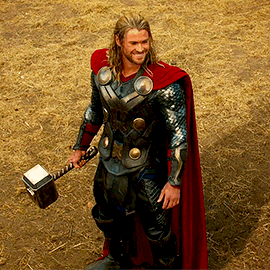



Thor’s outfits in Marvel’s Thor: The Dark World (2013)
Bonus:

#thor#thoredit#chris hemsworth#chemsedit#but that's literally just one freakin outfit#sometimes with a cloak#sometimes without the járngreipr#and one time of course with nothing on#this movie was low on budget i guess#thor the dark world#marvel#marveledit
458 notes
·
View notes
Text
MJÖLNIR.
Mjölnir is represented in Norse mythology and heathenry as one of the tremendous weaponries, which was adept of moving mountains. Mjolnir also had the power to channel lightning, and it was thought that the sound of thunder was caused when Þórr crashed his hammer down on his adversaries. To aid him employ the expansive deterrent, Þórr retained a belt, called Megingdjord, which amplified his previously significant force. He also had a set of iron gloves called Járngreipr.
Snorri Sturluson conditions that the hammer was created by the dwarven brothers Sindri and Brokkr. Concurring to several varieties of the story of Ragnarök, Mjölnir will play a responsibility in the reconstruction of the realm.
In the earliest versions of Ragnarök, all the gods are destroyed, and after the apocalypse, there is nothing. Þórr will die, after using Mjölnir to slay Jörmungandr. His two sons Modi and Magni will then inherit Mjölnir and use it to bring order to the new world that emerges from the ashes of the old.
Mjölnir in Old Norse is theoretical to “that which marks and pulverises to dust”, nevertheless an alternate proposal associates the name to Russian молния (molniya). This brands Mjölnir as the deterrent of the thunderstorm god acknowledged with lightning.
About 50 samplings of Mjölnir amulets have been located widely distributed through Scandinavia, dating from the 9th to 11th centuries, most frequently discovered in parts with a sturdy Christian effect with southern Norway, south-eastern Sweden, and Denmark. Fitting to the correspondence of equal-armed, square crosses of Christ on them at around the same time, the wearing of Þórr’s hammers as adornments may have come into an approach in rebelliousness of the charms worn by afresh Christians in the regions.
#mjolnir#working with Thor#Þórr#thor devotee#pagan offering#norsepagan#Norse myths#norse mythology#Heathen#heathenry#norse heathen
28 notes
·
View notes
Photo
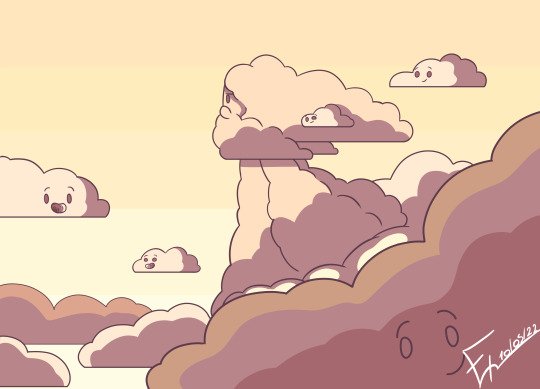
I couldn't show Thor and the Mjölnir without showing the former owner of the hammer.
This is Býleistr, sibling of Loki and the creator of all weather spirits.
One of the largest ancients, Býleistr was also known as Thor and was a short-tempered giant who could explode in lightning and thunder at the slightest issue. Due to it’s love for discussion and difficulty to be pleased, Brokkr and Eidi choose them to forge the Mjölnir to as a gift to strengthen the relationship between giants and dwarves.
Loki, jealous of his brother for receiving the thunderstorm hammer, decided to ruin Mjolnir's forge by turning into a fly and stinging Eidi's eye, which stopped pumping air into the forge for a second and caused the handle to shorten, thus making it impossible to use by a normal creature. Since Býleist was not a normal creature even among the giants, he not only liked the hammer, but started using it as both a good luck charm and weapon.
The redhead Odinson, after the discover of Mjölnir, decided to take the hammer for himself. He knew the hammer was heavy as a mountain and used Loki (that was blind by jealousy) to trick the dwarves to forge the Járngreipr as a request from Býleistr. With the gauntlest in hands, the Odinson stole the Mjölnir but, what Loki didn’t know was that the god would use the hammer to smash the life out of the ancient giant, claiming the name of Thor and the scrolls of weather spirits for himself.
Today, all weather spirits hate Thor and specially Loki.
#Hilda#hilda fanart#hilda netflix#hilda the show#hilda the series#hilda and the all-mother#hilda au#alternate universe#au#original character#oc#hilda ancient giant#ancient giant#ancient giant hilda#byleistr#hilda weather spirit#weather spirit#weather spirit hilda#background#ExJr original
20 notes
·
View notes
Text

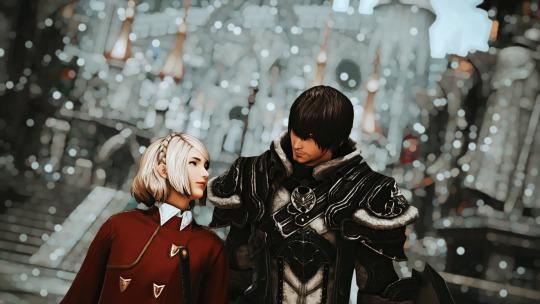
"being in the snow with my lover like this immerses me in a special feeling. I like it"
eisa járngreipr & meteor shadowbringer @ siren
23 notes
·
View notes
Note
Speaking of, Thor!Zuku also has a special set of wrist bracers (calling back to Thor’s Járngreipr (Iron Grippers/Gauntlets)) which actually limit Izuku’s strength so he wouldn’t... y’know.
They also kind of function similar to Rock Lee's weights where when he takes them off, things get real. Although there are the dude effects...Bakugo still has videos of stupid shit Izuku said while blasted out of his mind.
5 notes
·
View notes
Photo

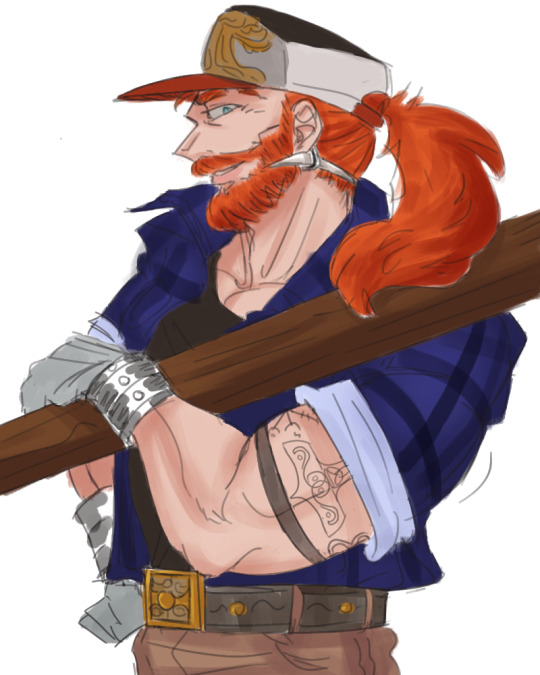

I’ve finally finished with the concepts for these Norse gods, so now I can finally introduce them on here! And make posts/rb posts about them lol. In order, left to right, is Bragi (god of music and poetry) and Isak’s dad, Thor (god of thunder and strength) and Haldor’s dad, and finally Odin (god of war, wisdom, and ruler of the nine realms).
Some tidbits about them:
Bragi: supposed to emulate those 80′s rock stars who’re past their prime but continues to make music and hosts parties, while still very chill. Looking at him, people get the sense that he used to be famous or was in a big band, but they can’t remember what it was. His voice is deep, smooth and a bit hoarse, people feel entranced by his every word. The harp pendent on his necklace is his symbol, and he gives a copies of it to his kin as gifts (which is how Isak that pendent on his choker). Regular mortals usually can’t see it, but Bragi’s tongue is covered in runes that glow with magic.
Thor: his Midgardian disguise emulates a logger and trucker (the tree on his hat represents Yggdrasil), who often talks about his jobs sending him everywhere and his favorite goats back at home. His belt and gloves are still Megingjörð and Járngreipr from the myths, and his ear spike earrings are made of goat bone. Thor has several tattoos that means various things from strength or protection in old Norse, including the symbol for his hammer Mjölnir. If he wishes to summon his hammer, he can pull it out of the tattoo and return it there. “I can’t misplace Mjölnir if it’s ingrained on my skin!”
Odin: just like the old myths, Odin still likes to travel around Midgard in disguise as homeless or poor. His aura/look gives off “wash up librarian or professor who got fired and is now drinking and possibly grifting me”. The one guy at the bar who gets into long conversations with people and/or debates them would be him. People can get annoyed at that, but are surprised with the amount of insight and advice he can give. His cane is Gungnir in disguise, the pin on his suit is that of a Valknut (his symbol). Watching him walk on the street, crows seem to flock nearby and canines are friendly to him.
#zed's art#ocs#oc art#cue me visibly holding back a lot more info about them#(📜) the written edda (lore)#(🎼) Bragi art#(🎼) Bragi lore#(🔨) Thor art#(🔨) Thor lore#(👑) Odin art#(👑) Odin lore
2 notes
·
View notes